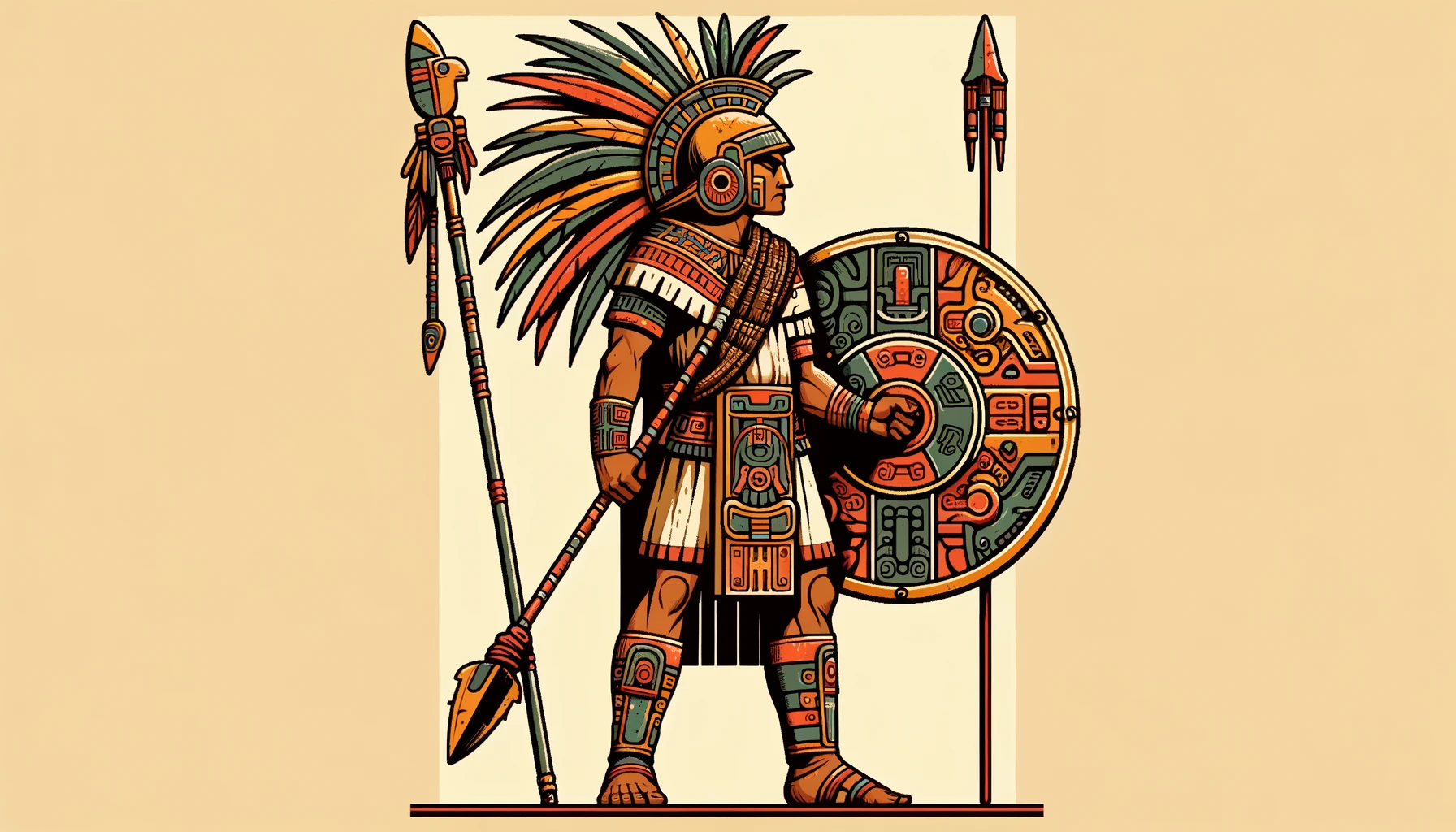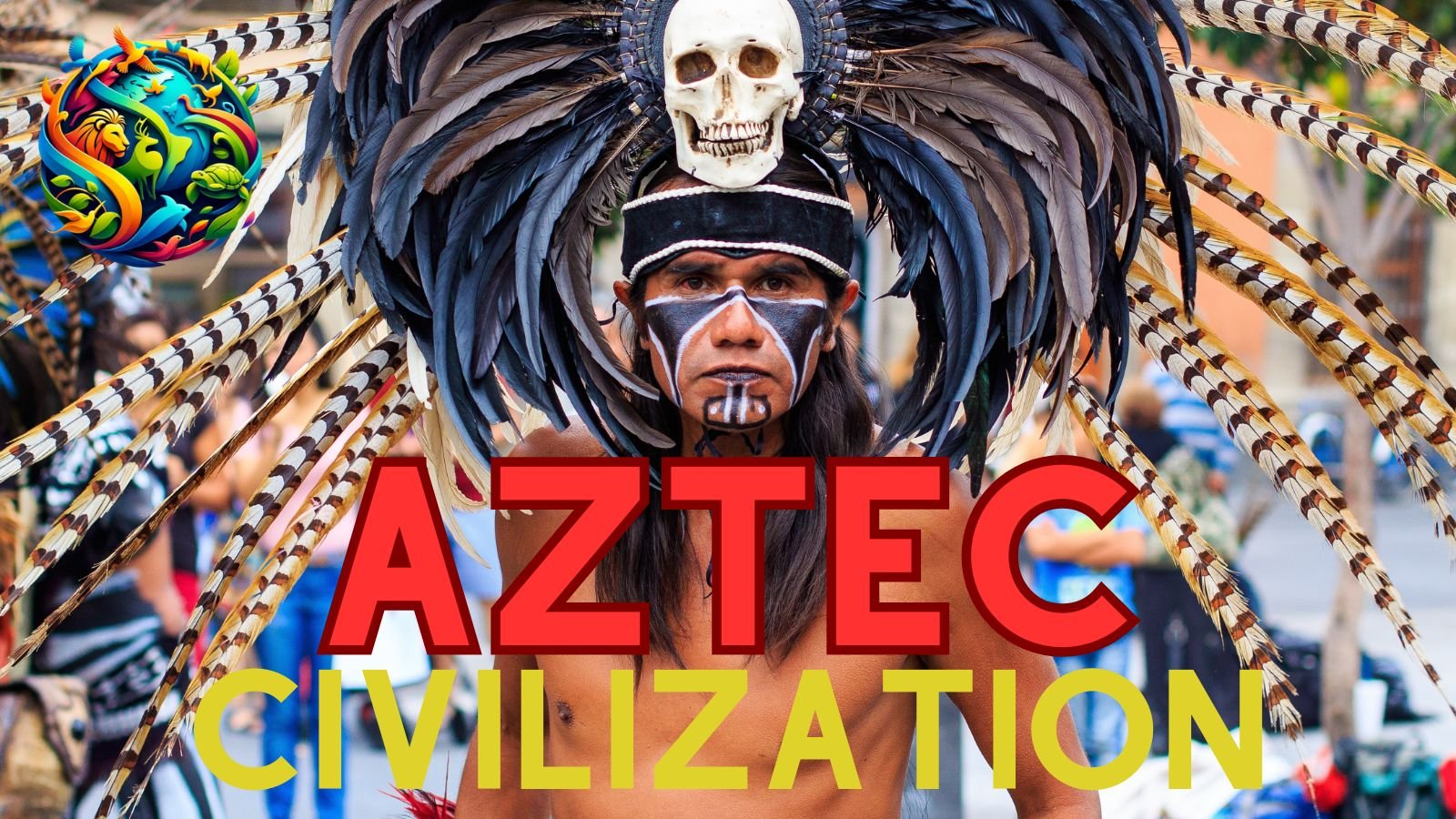Aztec Civilization: Unveiling the Mystery of Ancient America
Introduction to Aztec Civilization
The Aztec Civilization, a tapestry of intricate social, political, and religious elements, flourished in the heart of Mesoamerica from the 14th to the 16th centuries. Known for their remarkable achievements in engineering, mathematics, and the arts, the Aztecs built one of the most sophisticated empires of the ancient Americas. Their capital, Tenochtitlán, was a marvel of urban planning and architecture, reflecting the civilization’s advanced understanding of the world around them.
The Rise of the Aztec Empire
The Origins of the Aztec People
Emerging from the mythical origins of Aztlan, the Aztecs, or Mexica, embarked on a monumental journey that led them to the Valley of Mexico. Here, they founded their capital, Tenochtitlán, on an island in Lake Texcoco, guided by prophecies and their patron deity, Huitzilopochtli. This marked the beginning of their transformation from a nomadic tribe to a formidable empire through strategic alliances and military conquests.
Expansion and Conquest
The Aztec Empire expanded through a combination of military prowess and political alliances. Their society was highly organized for war, with a focus on capturing enemies for religious sacrifice rather than outright slaughter. This expansionist policy brought vast territories under their control, enriching the empire through tributes and trade.
Political Structure and Leadership
The Role of the Emperor
The Aztec emperor, or Huey Tlatoani, was the supreme ruler, embodying both political and divine authority. His decisions shaped the empire’s destiny, from warfare to religious ceremonies. The emperor’s power was supported by a complex bureaucracy, including priests, warriors, and local governors, ensuring the empire’s cohesive management.
Governing the Empire: City-States and Tributaries
The Aztec Empire was a confederation of city-states, each governed by a local ruler who paid tribute to the emperor. This system allowed for a degree of autonomy while ensuring loyalty through political marriages and the establishment of military garrisons.
Social Hierarchy and Daily Life
Nobles, Commoners, and Slaves
Aztec society was stratified, with a clear distinction between nobles, commoners, and slaves. Nobles dominated the political, military, and religious spheres, while commoners, comprising farmers, artisans, and merchants, formed the backbone of the economy. Slaves, often war captives or debtors, could buy their freedom and enjoy certain legal protections.
Family Life and Education
Family units were central to Aztec society, with education beginning at home and continuing in formal schools for nobles and commoners alike. Boys were trained in warfare and religious practices, while girls learned household skills and crafts. Education reinforced social norms and prepared the young for their roles in society.
Economic Foundations
Agriculture and Trade
The Aztecs developed advanced agricultural techniques, including the chinampa system, to maximize land use and crop yields. Trade flourished, with merchants (pochteca) undertaking long journeys to acquire precious goods like cacao, jade, and quetzal feathers, which were essential for the economy and religious ceremonies.
The Importance of Markets
Markets were the lifeblood of the Aztec economy, with the Tlatelolco market in Tenochtitlán being one of the largest in the Americas. Here, thousands of people traded daily, exchanging everything from basic foodstuffs to luxury items, showcasing the empire’s economic diversity and sophistication.
Religious Beliefs and Practices
Gods and Goddesses
The Aztec pantheon included a vast array of deities, each overseeing different aspects of the natural world and human endeavor. Central to their cosmology were the sun god Huitzilopochtli, the rain god Tlaloc, and Quetzalcoatl, the feathered serpent god of wind and learning. These gods demanded worship and sacrifice to maintain cosmic balance and ensure the continuation of the world.
Human Sacrifice and Rituals
Human sacrifice was a fundamental aspect of Aztec religion, intended to appease the gods and ensure prosperity. Captives taken in battle were often sacrificed in elaborate ceremonies, their blood offered to nourish the deities. While these practices have been sensationalized, they were a deeply spiritual part of Aztec culture, reflecting the civilization’s complex relationship with the divine.
Aztec Innovations and Achievements
Engineering and Architecture
The Aztecs were master engineers, constructing monumental pyramids, temples, and palaces that have stood the test of time. Their capital, Tenochtitlán, was a marvel of engineering, featuring an intricate network of canals, bridges, and causeways that connected the city’s many islands.
The Aztec Calendar and Astronomy
The Aztec calendar, a sophisticated system combining a 365-day agricultural cycle with a 260-day ritual cycle, was central to daily life and religious practice. Aztec astronomers observed celestial movements with remarkable accuracy, using them to predict agricultural cycles and plan religious festivals.
Art, Culture, and Recreation
Visual Arts and Crafts
Aztec art was deeply intertwined with religious and societal values, manifesting in intricate sculptures, featherwork, and codices that depicted gods, historical events, and daily life. Craftsmanship was highly valued, with artisans creating beautiful objects from precious metals, stones, and textiles.
Music, Dance, and Poetry
Music and dance were vital components of religious ceremonies and public festivities, used to honor the gods and celebrate the empire’s achievements. Poetry, too, was a respected art form, with poets expressing themes of heroism, beauty, and the transience of life.
The Spanish Conquest
Encounter with the Spanish
The arrival of Spanish conquistadors led by Hernán Cortés in 1519 marked the beginning of the end for the Aztec Empire. Misunderstandings, strategic alliances with discontented tribes, and the devastating impact of European diseases contributed to the fall of Tenochtitlán in 1521.
The Fall of Tenochtitlán
The siege of Tenochtitlán was a catastrophic event, resulting in the destruction of the city and the loss of countless lives. Despite fierce resistance, the Aztecs were unable to withstand the combined forces of the Spanish and their indigenous allies, leading to the collapse of one of the most remarkable civilizations in the Americas.

Post-Conquest: The Legacy of the Aztecs
Influence on Mexican Culture
The Aztec civilization has left a lasting impact on Mexico, influencing its language, art, and cultural practices. Aztec symbols, myths, and architectural remains are integral to Mexican identity and are celebrated in festivals, literature, and the arts.
Aztec Contributions to Modern Society
The Aztecs’ achievements in agriculture, engineering, and social organization continue to inspire modern society. Their innovative agricultural techniques, such as the chinampa system, have applications in sustainable farming, while their urban planning principles inform contemporary city design.
Challenges in Studying Aztec Civilization
Archaeological Discoveries
Archaeological excavations in Mexico City and surrounding areas have unearthed significant artifacts and ruins, offering insights into Aztec life. However, the interpretation of these findings is complex, requiring a multidisciplinary approach to fully understand the civilization’s depth and breadth.
Interpretation of Aztec Codices
The Aztec codices, while invaluable sources of information on Aztec history, culture, and religion, are subject to interpretation. Deciphering these ancient manuscripts requires expertise in Nahuatl language and symbolism, posing challenges for historians seeking to piece together the Aztec worldview.
Comparative Analysis: Aztecs with Other Mesoamerican Cultures
The Aztecs were part of a rich tapestry of Mesoamerican civilizations, including the Maya, Olmec, and Toltec. While sharing cultural and religious similarities, each civilization made unique contributions to the region’s development. The Aztecs, with their military prowess and administrative skills, built an empire that, at its zenith, was unparalleled in the Americas.
Contemporary Reflections on Aztec Civilization
The Aztec legacy continues to resonate in modern Mexico and beyond, with efforts to revive traditional practices and languages. Interest in Aztec history and culture has grown, fueled by archaeological discoveries and a reassessment of pre-Columbian history. This renewed appreciation highlights civilization’s contributions to human knowledge and its enduring influence on contemporary society.
Debunking Myths: Understanding the Aztecs Beyond Stereotypes
Popular portrayals of the Aztecs often focus on human sacrifice and warfare, overshadowing their achievements in arts, science, and governance. A deeper understanding of Aztec civilization reveals a complex society with a rich cultural heritage, challenging stereotypes and opening new avenues for appreciation and study.
Aztec Civilization in the Classroom
Integrating Aztec history and culture into educational curricula offers students a broader perspective on the Americas before European contact. Resources and strategies for teaching about the Aztecs include interactive lessons, primary source analysis, and visits to museums with Aztec collections. Engaging students with this vibrant civilization encourages a deeper appreciation of indigenous cultures and their contributions to world history.
FAQs About Aztec Civilization
- What led to the rapid expansion of the Aztec Empire?
- How did the Aztecs adapt to their environment?
- What role did religion play in Aztec society?
- How did the Spanish conquest affect the Aztec civilization?
- Can you describe the Aztec calendar and its significance?
- What are some common misconceptions about the Aztecs?
Conclusion: The Timeless Influence of the Aztec Civilization
The Aztec Civilization, with its rich history, cultural achievements, and enduring legacy, remains a subject of fascination and admiration. As we continue to uncover the mysteries of this remarkable empire, we gain insights into the complexities of human societies and the indelible marks they leave on history. The Aztecs, with their innovative spirit and profound understanding of the natural world, offer timeless lessons on resilience, creativity, and the importance of preserving cultural heritage.





What i don’t understood is in fact how you are not really a lot more smartly-favored than you may be now. You are so intelligent. You know thus considerably on the subject of this subject, made me in my opinion consider it from numerous varied angles. Its like women and men aren’t involved unless it¦s something to do with Lady gaga! Your personal stuffs great. At all times handle it up!
Do you have a spam issue on this site; I also am a blogger, and I was wanting to know your situation; many of us have created some nice procedures and we are looking to exchange techniques with other folks, please shoot me an email if interested.
Hello. magnificent job. I did not expect this. This is a excellent story. Thanks!
You have noted very interesting points! ps decent internet site.
I like this website so much, bookmarked. “Nostalgia isn’t what it used to be.” by Peter De Vries.
Pretty nice post. I just stumbled upon your weblog and wanted to say that I have really enjoyed browsing your blog posts. After all I will be subscribing to your rss feed and I hope you write again soon!
Perfectly indited content material, thankyou for information .
Excellent read, I just passed this onto a colleague who was doing a little research on that. And he just bought me lunch as I found it for him smile Thus let me rephrase that: Thank you for lunch!
This design is incredible! You certainly know how to keep a reader amused. Between your wit and your videos, I was almost moved to start my own blog (well, almost…HaHa!) Fantastic job. I really loved what you had to say, and more than that, how you presented it. Too cool!
I¦ve been exploring for a little for any high quality articles or weblog posts in this sort of area . Exploring in Yahoo I eventually stumbled upon this website. Studying this info So i¦m glad to express that I’ve an incredibly good uncanny feeling I came upon exactly what I needed. I most indubitably will make certain to don¦t forget this website and give it a look regularly.
Its superb as your other posts : D, thankyou for putting up.